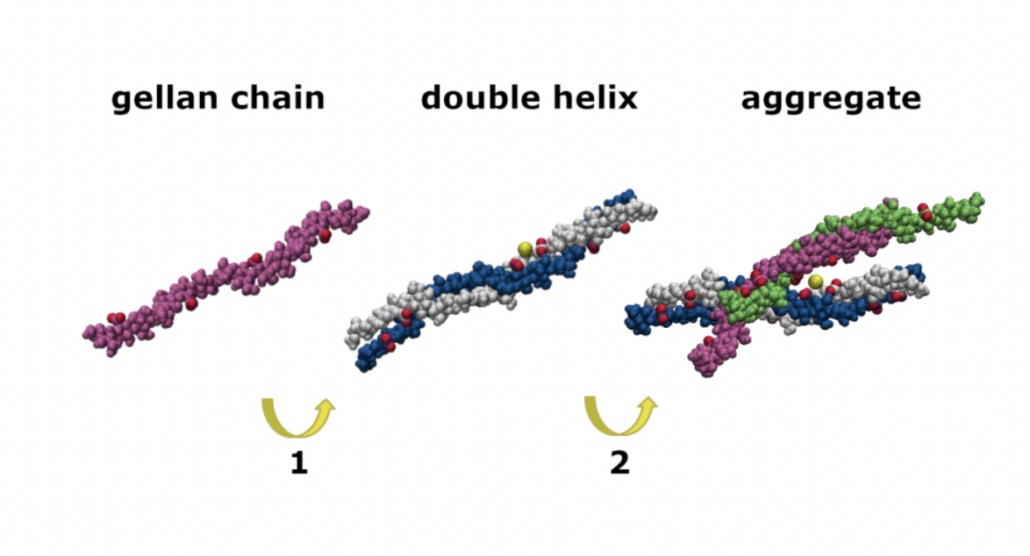Molecular origin of the two-step mechanism of gellan aggregation in Science Advances
ISC researchers in collaboration with the University of Ferrara and University of Rome Tor Vergata recently published a beautiful research work, Molecular origin of the two-step mechanism of gellan aggregation, on Science Advances. The work provides the first microscopic overview of gellan aggregation detecting the coil to single-helix transition at dilute conditions and the formation of higher-order aggregates at high concentration.
Abstract
Among hydrocolloids, gellan is one of the most studied polysaccharides due to its ability to form mechanically stable gels. Despite its long-standing use, the gellan aggregation mechanism is still not understood because of the lack of atomistic information. Here, we fill this gap by developing a new gellan force field. Our simulations offer the first microscopic overview of gellan aggregation, detecting the coil to single-helix transition at dilute conditions and the formation of higher-order aggregates at high concentration through a two-step process: first, the formation of double helices and then their assembly into superstructures. For both steps, we also assess the role of monovalent and divalent cations, complementing simulations with rheology and atomic force microscopy experiments and highlighting the leading role of divalent cations. These results pave the way for future use of gellan-based systems in a variety of applications, from food science to art restoration.


